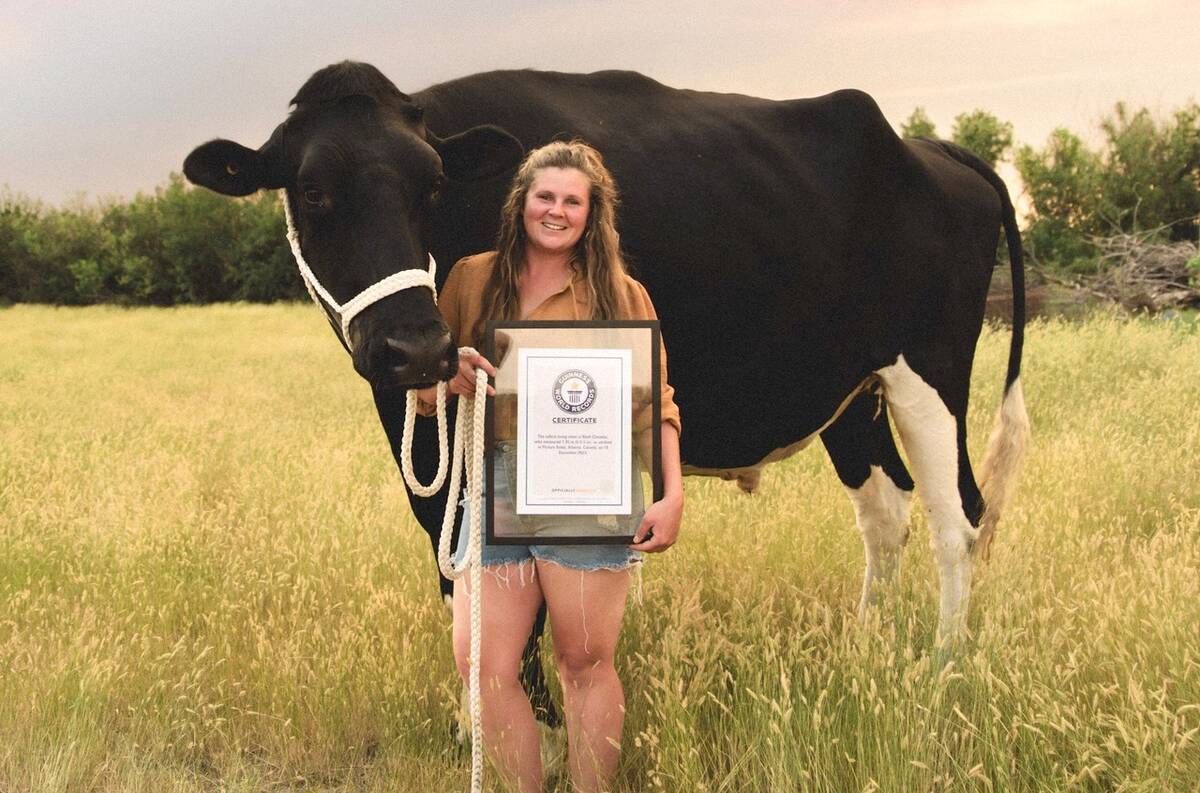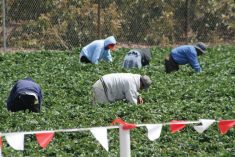When the pandemic struck, Cindy Zhang, a grad student from Calgary, wanted to do something to help those less fortunate.
“I thought it would be great to connect farms to food banks, and also to communities in need and to churches as well,” she said. “We started reaching out to greenhouses when we noticed a lot of farms were experiencing surplus because of restaurant closures.
“I just started to talk to food banks in Calgary and Edmonton, and heard there was an increase in demand. We wanted to connect the two with our organization.”
Read Also

There has to be a world record for something out there
Hart Attacks columnist Lee Hart ponders about world records and one Alberta acreage which is home to the world’s tallest steer.
Zhang is one of the co-founders of Farms to Families, formally known as the FarmLink Project Canada.
“When I noticed there was a lot of food waste, I wanted to connect any food surplus to anyone experiencing food insecurity,” she said.” At the time, there was another organization doing it called Farmlink U.S. We are an independent organization (but) it was doing something similar, and it gave us guidance on how to connect with farms.”
Zhang is now studying public health at the University of Toronto, but is still continuing the project, which she and friend Tom Zhao began in May 2021.
Initially, she and Zhao cold called farms around Calgary, Lethbridge, Red Deer and Edmonton, and picked up foods from farms and greenhouses such as Swiss Leaf Farms and Whole Leaf Farms.
“In the beginning, we partnered with a few greenhouses because it wasn’t harvesting season yet,” said Zhang. “Then we partnered with hydroponic lettuce farms, and then more greenhouses and regular farms that produce lettuce and tomatoes.”
The anecdotal reports of increased food bank use that Zhang heard are borne out by a new report from Food Banks Canada, the national organization representing about 650 food banks across the country.
Despite Ottawa’s unprecedented pandemic support for low-income Canadians, the number of visits to food banks grew by 20 per cent this year compared to 2019, the organization’s latest HungerCount report says. There were 1.3 million visits to food banks nationwide in March of this year, with about nine per cent of those in Alberta (116,000 during the month).
That’s an increase of nearly 30 per cent, and the number of children receiving food is also higher in Alberta than nationally (39 per cent here versus 33 per cent across the country).
“It’s staggering to see these numbers in Alberta, but not surprising with how hard hit the province was largely due to the pandemic,” Food Banks Alberta interim CEO Arianna Scott said in a release.
There are more than 100 food banks in the province.
“Our member food banks across Alberta have all been reporting a surge in food bank access, which includes a new population of Albertans accessing their local food bank largely due to increases in rental or housing costs, increased food costs, unemployment and other pandemic-related circumstances,” said Scott.
That ongoing need continues to drive Farms to Families, which now has about 15 student volunteers, mainly from McMaster University in Hamilton. The students raise awareness through social media, and contact farms and food banks.
“We began reaching out to farms in Alberta, and eventually expanded to Ontario,” said Zhang. “We’re continuing to build more farm connections. We definitely have more than when we first started. We’re hoping to work with farms weekly or monthly. We do a few deliveries here and there, but we definitely want to do more constant deliveries.”
The students contact the farms and connect their owners with food banks and community organizations that may need food or fresh produce.
The goal is to expand to other parts of the country.
“We’re cold calling farms in other provinces just to see if any farms are interested,” she said.
To date, the group has delivered about 40,000 pounds of food to food banks.
And there’s an opportunity to do more, said Zhang.
“When farms experience surplus, we didn’t want to see it go to waste. So we wanted to make it easier for them to donate their food to any food agency that we could help connect them with to make the process easier for them.
“We also hope to empower students in reducing food waste and help individuals who may face a barrier to accessing nutritious food and make access easier for them.”
The group is still looking for farmers who may be interested in donating produce. Interested parties can learn more at www.farmstofamiliescanada.org. — With staff files
















